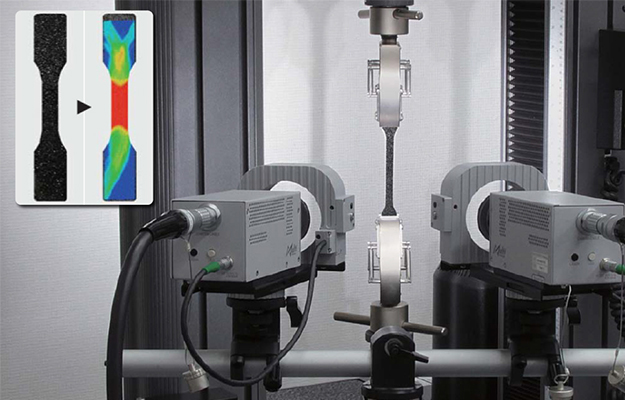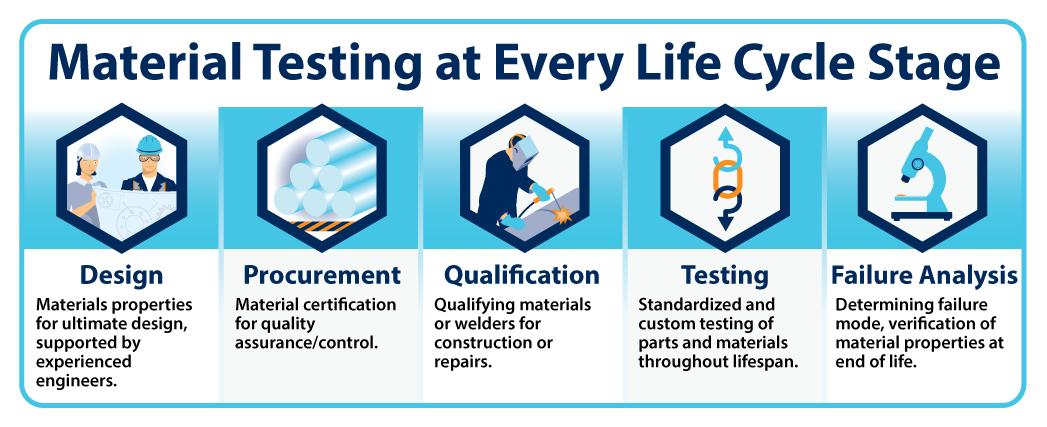Materials Test Lab Radiance: Deciphering Quality with Expertise
Wiki Article
Pressing Borders: Discovering Strategies in Products Screening
Welcome to 'Pushing Boundaries: Exploring Techniques in Materials Testing'. In this conference, we will look into the cutting-edge and innovative methods used in the area of products screening. As innovation developments, so does our capability to push the boundaries of what is feasible in screening and evaluating various materials. From innovative imaging modern technologies to high-throughput screening strategies, we will certainly check out the most up to date techniques that allow us to gain a much deeper understanding of product residential or commercial properties and behavior. Via non-destructive screening methods and novel multi-scale evaluation techniques, we can uncover beneficial understandings that can transform industries such as aerospace, manufacturing, and building and construction. Join us as we start a journey of exploration and exploration in the world of materials screening.Advanced Imaging Technologies
Advanced imaging technologies have actually changed the field of materials testing, enabling scientists to delve deeper right into the architectural homes of products. These cutting-edge methods have actually opened new avenues for examining and assessing materials, offering useful understandings that were formerly unattainable.One such advanced imaging technology is X-ray computed tomography (CT), which utilizes X-ray light beams to develop 3D images of the internal structure of materials. By recording numerous X-ray pictures from various angles and rebuilding them, scientists can envision the internal features and problems of materials with outstanding information. This non-destructive strategy is specifically useful for examining complex structures, such as composite materials or components with elaborate geometries.

In addition, atomic force microscopy (AFM) has become a beneficial device for characterizing the surface buildings of materials at the nanoscale. By scanning a sharp probe across the product's surface area, AFM can gauge forces and create comprehensive topographic maps, supplying beneficial details about surface roughness, mechanical homes, and bond pressures.
Cutting-Edge Simulation Approaches
An array of modern simulation methods are pushing the boundaries of products screening, using scientists unmatched understandings right into material habits. These innovative simulation techniques utilize sophisticated computational methods to design and predict the performance of materials under numerous problems. By imitating the actions of products at the molecular and atomic level, researchers can better recognize the hidden systems that regulate material residential or commercial properties and performance.One of the most noteworthy simulation methods is molecular characteristics (MD), which imitates the movement and interactions of atoms and molecules with time. MD permits researchers to investigate sensations such as crack, contortion, and phase shifts in materials. An additional powerful technique is limited element evaluation (FEA), which splits a complex framework or material right into smaller, more convenient elements and assesses their habits under various lots. FEA is widely made use of in engineering and products science to research the action of products to mechanical, thermal, and electromagnetic pressures.
Furthermore, multiscale modeling integrates various simulation methods to connect the void in between atomistic and macroscopic ranges. By incorporating information from various size ranges, researchers can precisely forecast the behavior of materials under real-world conditions.
These sophisticated simulation methods are transforming products screening by providing insights that are difficult or otherwise difficult to acquire experimentally. They allow scientists to maximize product style, explore new materials, and improve the performance and integrity of existing materials in a broad range of sectors, from aerospace to biomedical.
Non-Destructive Testing Strategies

- Various non-destructive screening strategies are used in products testing to analyze the residential or commercial properties and integrity of materials without creating damage. These strategies play an essential function in various markets, including aerospace, vehicle, building, and manufacturing, where the top quality and dependability of materials are paramount.
One commonly made use of non-destructive testing technique is ultrasonic screening. This technique entails sending out high-frequency audio waves with a material and analyzing the mirrors that recuperate. By gauging the time it takes for the echoes to return, professionals can figure out the density of the material, discover inner defects, and assess the general structural stability.
An additional widely utilized method is radiographic testing, which uses X-rays or gamma rays to evaluate products. This method is specifically effective for spotting interior flaws such as spaces, additions, or cracks. By revealing the material to radiation see it here and recording the resulting picture on a movie or digital detector, professionals can examine the top quality and stability of the product.
Various other non-destructive screening strategies consist of magnetic fragment testing, color penetrant screening, and swirl present testing. Each method has its own unique benefits and appropriates for particular product types and applications.
High-throughput Testing Approaches
High-throughput screening approaches offer a comprehensive and reliable ways of reviewing materials in huge quantities throughout the testing process. This approach includes the simultaneous testing of countless samples, permitting the rapid identification of materials with wanted homes or qualities.Among the essential advantages of high-throughput testing methods is the capability to test a variety of materials in a brief duration of time. Traditional testing methods frequently require labor-intensive and time-consuming procedures, making it hard to evaluate huge numbers of examples. With high-throughput screening, researchers can quickly evaluate products on a range that was previously not feasible.
One more advantage of high-throughput testing is its capability to recognize products with details properties or features. By checking a a great deal of samples, researchers can identify materials that display details residential or commercial properties, such as high stamina or exceptional conductivity. This makes it possible for scientists to customize products for specific applications or industries.
High-throughput screening methods visit site likewise permit the exploration of brand-new products with special buildings. By examining huge amounts of products, scientists can reveal products that display unique attributes or habits. This can cause the advancement of new materials that have a wide variety of applications, from innovative electronic devices to power storage space.
Novel Multi-scale Analysis Approaches
The execution of novel multi-scale evaluation techniques improves the precision and accuracy of products examining procedures. By integrating several scales of evaluation, scientists are able find more to acquire a more comprehensive understanding of the actions and properties of products. Standard materials testing approaches commonly concentrate on macroscopic residential or commercial properties, but these approaches stop working to capture the detailed details and interactions that take place at smaller ranges.One instance of a novel multi-scale evaluation method is making use of computational modeling. By replicating the behavior of products at different ranges, researchers can forecast and comprehend their mechanical, thermal, and chemical residential or commercial properties. This permits more exact predictions and optimizations of product performance.
An additional method entails the use of innovative imaging methods, such as electron microscopy and atomic pressure microscopy - materials test lab. These techniques make it possible for researchers to picture and analyze products at the nanoscale, supplying insights into their microstructure and make-up. By combining these monitorings with macroscopic testing data, an extra complete photo of the product's behavior can be acquired
In addition, the combination of equipment knowing formulas and information analytics in materials testing has actually additionally improved the precision of evaluation. These methods can determine patterns and relationships in huge datasets, enabling faster and a lot more reliable evaluation of materials homes.
Verdict
Finally, the exploration of methods in products screening has actually led to significant developments in different locations. Advanced imaging modern technologies have actually permitted detailed evaluation and visualization of material structures. Innovative simulation approaches have actually promoted the forecast and understanding of product actions. Non-destructive screening strategies have actually made it possible for the evaluation of material honesty without creating damages. High-throughput testing strategies have actually increased the exploration of brand-new materials. Finally, novel multi-scale analysis methods have given understandings right into product properties at various ranges. These improvements have pushed the borders of products testing and paved the means for more research study and development.
A range of modern simulation techniques are pushing the limits of materials screening, offering scientists unmatched understandings into product habits (materials test lab). By imitating the habits of products at the atomic and molecular degree, researchers can much better understand the underlying devices that govern product residential or commercial properties and efficiency
Various non-destructive screening strategies are utilized in products examining to take a look at the properties and stability of products without causing damage. By revealing the product to radiation and capturing the resulting picture on a movie or digital detector, service technicians can assess the top quality and strength of the material.
By evaluating big amounts of products, researchers can uncover materials that show unique characteristics or habits.
Report this wiki page